What Animals Live On The Galapagos Islands
The Galapagos Islands' animals, both on land and in the h2o, are exceedingly unique. Visiting this remote wild fauna haven you will see highly-adjusted species, some incredibly existence endemic to individual Islands. Indeed the Galapagos are home to some of the highest levels of endemism anywhere on globe, with around 90% of the archipelago's country mammals and reptiles, 75% of its land birds and 20% of its marine species establish nowhere else on the planet.
Something else truly incredible about Galapagos Islands animals is that they have evolved with insufficiently little human contact or major predators for hundreds of years. Every bit such, their fearfulness of humans has never adult, significant you can observe these beautiful creatures from surprisingly shut range in their natural habitat.
For a full list of Galapagos Islands animals you may similar to cheque out the Charles Darwin Foundation's comprehensive Galapagos Species Checklist Annal. However, if you aren't then familiar with the scientific names of animals, we've created a listing of 10 of the almost remarkable wild animals species that y'all can have the privilege of seeing on a Galapagos tour, also equally some useful safety advice to comport in mind when effectually the archipelago'south animals, and some helpful Galapagos Islands wildlife spotting tips.
Top 10 Galapagos Islands Animals

Tortoise stroll
one. Galapagos Tortoises
The iconic tortoises are probably the most important species on the Galapagos Islands and the most famous. Not only because the islands themselves were actually named later these creatures, Galapagos means tortoise in Spanish! The earth'southward largest tortoise and longest-living vertebrate, these impressive creatures tin can alive to exist over 150 years old! Once the species thrived on the Galapagos Islands with populations exceeding 250,000, but later years without a natural predator, humans have since exploited the animate being leaving just fifteen,000 in existence today, and as a result, the tortoises are under intense conservation.
Which island? The largest group of Galapagos Tortoises can be found on the Volcano Alcedo on Isabela Island, with over 4,000 living there.
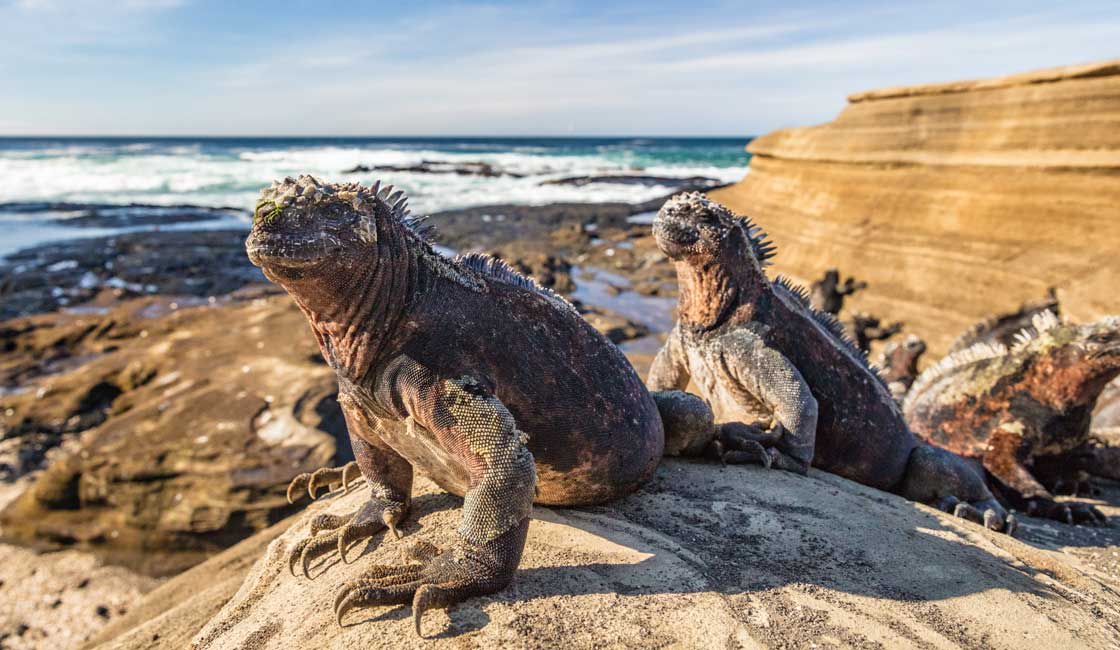
Marine Iguanas
two. Marine Iguana
This species of iguana is the only marine lizard left on earth! The Marine Iguana is unique to the Galapagos Islands, where it lives its unique marine lifestyle, adjusted from years of life on the islands. The Marine Iguana lives on seaweed, with special nasal glands that are able to filter out excess salt from its body. This incredible animate being tin dive up to 30 feet in the water and can be constitute on the rocky shorelines, marshes and mangrove beaches of the Galapagos Islands. Despite its advent and spiky exterior, which can look a picayune mean and frightening, the herbivores are perfectly harmless, docile creatures who are actually vulnerable to extinction from rats and other feral creatures on the islands.
Which island? Marine Iguanas tin can exist found on every Galapagos Island, so exist sure to scout where you step!
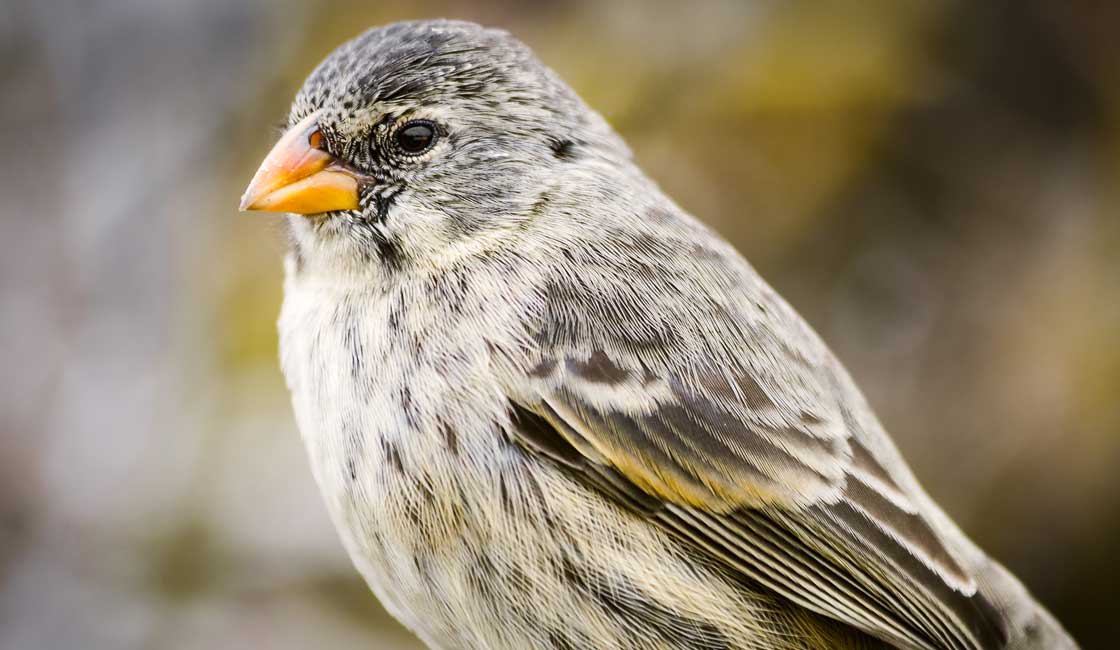
A Finch
3. Galapagos Finches
Amend known as Darwin's Finches, the thirteen species of finches on the islands are defined past their environment, with differing features betwixt each species. This diversity of species contributed to Darwin'southward theory of natural selection and gave Darwin valuable insights into evolution.
Which island? Yous tin spot the endangered sharp-beaked finch on the fundamental and western islands, the pocket-size basis finch on most of the big islands and the cactus finch on the fundamental islands, except Fernandina.
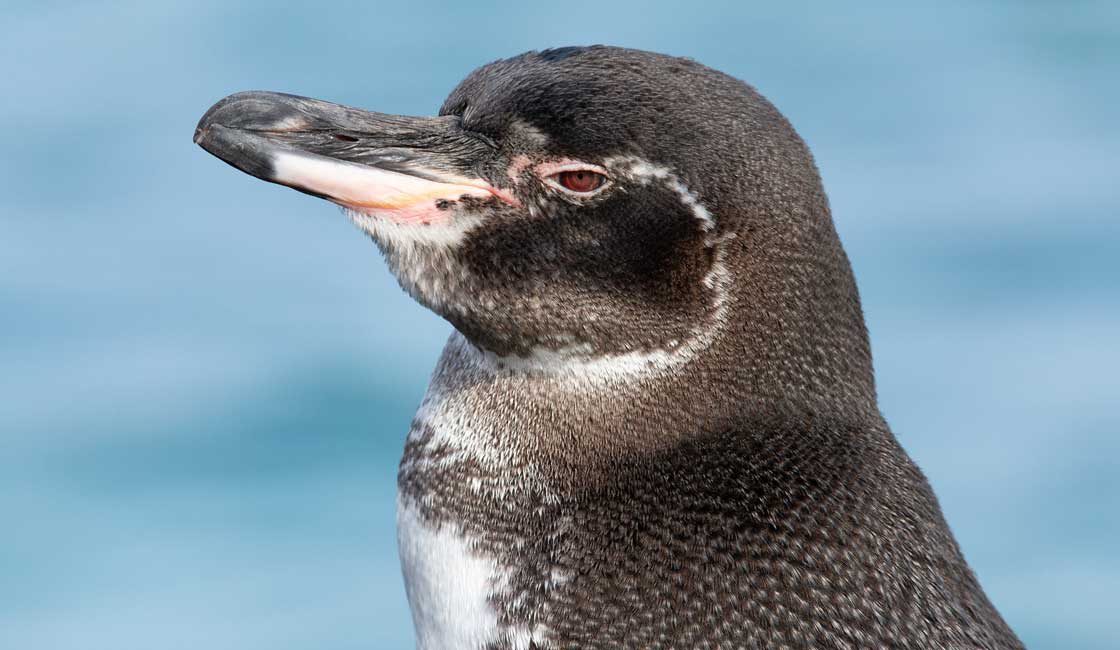
Penguin In The Lord's day
four. Galapagos Penguin
One of the smallest penguins in the world and the only penguin that lives north of the equator, the Galapagos Penguin is entirely unique to the Galapagos Islands. The most endangered creature on the islands and most endangered penguin in the world, their populations take dropped largely because their limited options for nesting on the islands have been destroyed or overtaken by Marine Iguanas. Galapagos Penguins mate for life and their population is said to be around 1,000-one,300 pairs.
Which isle? You can find 90% of the Galapagos Penguins on the western islands of Fernandina and Isabela.
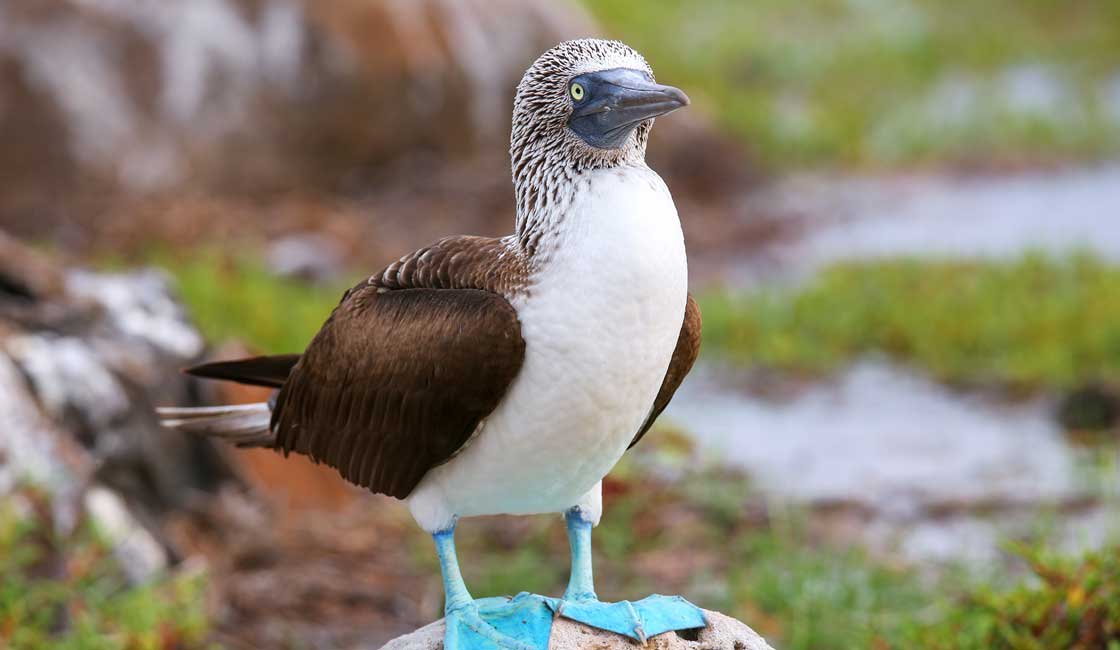
Blue-footed Booby
5. Blueish-Footed Booby
Defined past their distinctive blue feet and comical mating trip the light fantastic toe, Blueish-footed Boobies are not sectional to the Galapagos, only half of the world'south population breeds on the islands. The shade of blue is very important, since the bluer the feet, the healthier the bird, and the more attractive the bird is for potential mates. They tin can be found all forth the Pacific declension, stretching from Southern California down to Peru. Approximately 70% of the total blue-footed booby population are plant on the Galapagos Islands.
Which island? The Blueish-footed Booby can exist establish on almost islands, except those in the north. Their population is, however, decreasing and traditional breeding sites on Española Island have been largely abandoned by the birds.
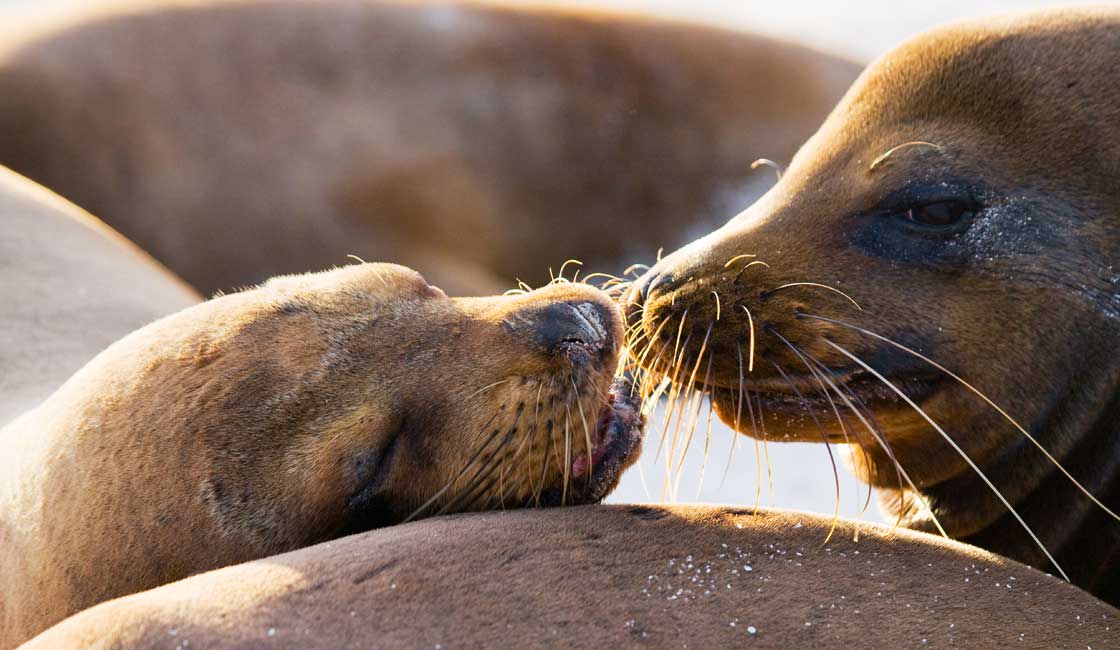
Sealions Being Cute
six. Galapagos Sealions
The adorable Galapagos Sealion is completely unique to the Galapagos Islands, with smaller numbers found on the Isla de la Plata and Gorgona Isle. Watching the sea lions surfing in the ocean or sunbathing on the shore, enjoying their laid-back lifestyle, is definitely ane of the corking attractions of the Galapagos. The largest marine mammal on the islands, and with a population of around 50,000, the playful nature and loud barking noise of these creatures ordinarily make them one of the first animals yous come across on your approach to the islands by gunkhole.
Which island? Sealions can exist institute on virtually of the Galapagos Islands, including Fernandina Isle.
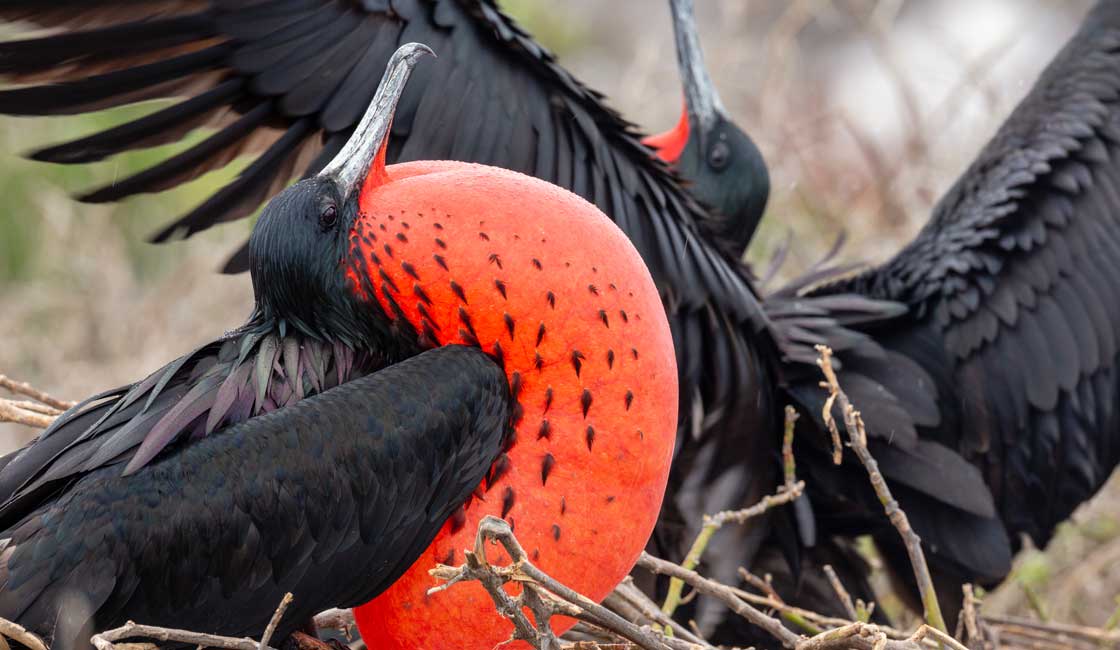
Magnificent indeed
7. Magnificent Frigatebird
The male Magnificent Frigatebird has an extremely distinctive feature of a behemothic red throat pouch only beneath its beak. When it is fully inflated it's quite a sight to see! The males inflate in a brandish for the females, and the brighter the pouch, the more attractive! While not entirely unique to the Galapagos, the species institute on the islands are thought to be genetically singled-out from their other worldly counterparts. While the Magnificent Frigatebird is a seabird, if its plume gets too wet it will drown, every bit it does not have the oily, waterproof feathers seabirds usually take. Yous can oftentimes hear the Magnificent Frigatebird before you encounter it, with its rattling, drumming noise.
Which isle? The largest and most active colony of Magnificent Frigatebirds can be found on North Seymour Isle.
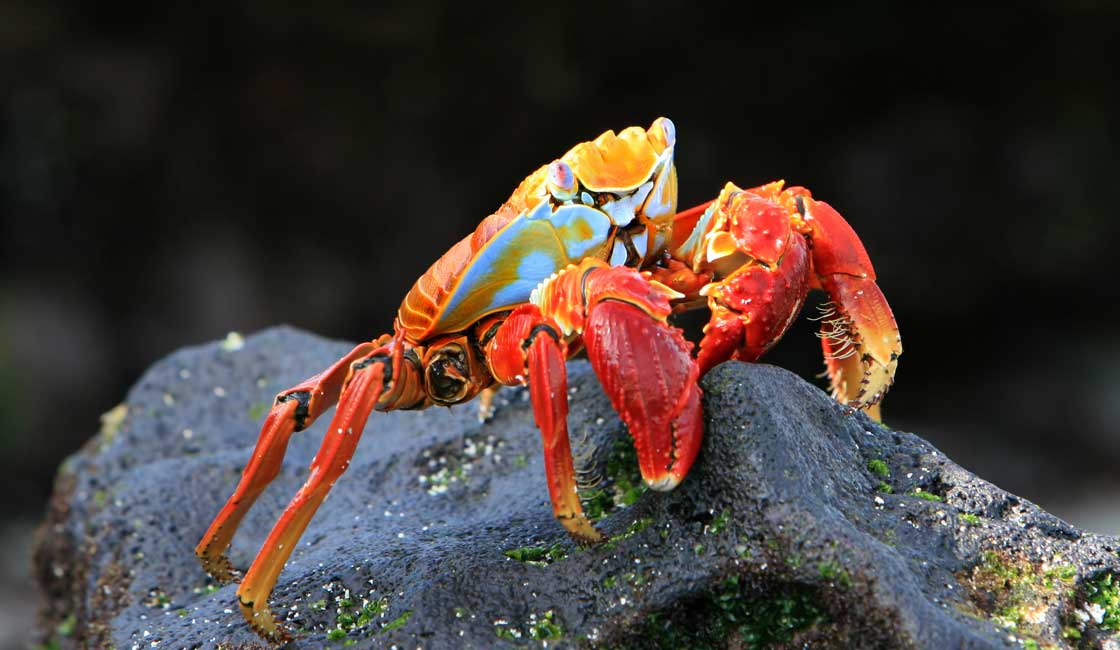
Colorful Sally
8. Sally Lightfoot Crabs
The distinctive population of Sally Light Foot Venereal on the Galapagos Islands are a unique species of the Light Foot crab, constitute on the coast of the Americas. Dissimilar their crabby cousins, the Galapagos Sally Light Pes Crab works in harmony with the marine iguanas of the islands, cleaning ticks from their skin. Their brightly-colored bodies brand them stand out on the rocks and shores of the islands, a target for bully wild animals photographers on the islands. Their proper noun comes from their ability to motility easily beyond the summit of the water, which makes them look like they are walking on water!
Which island? Often come across in large groups on the rocks of Santa Cruz Island.
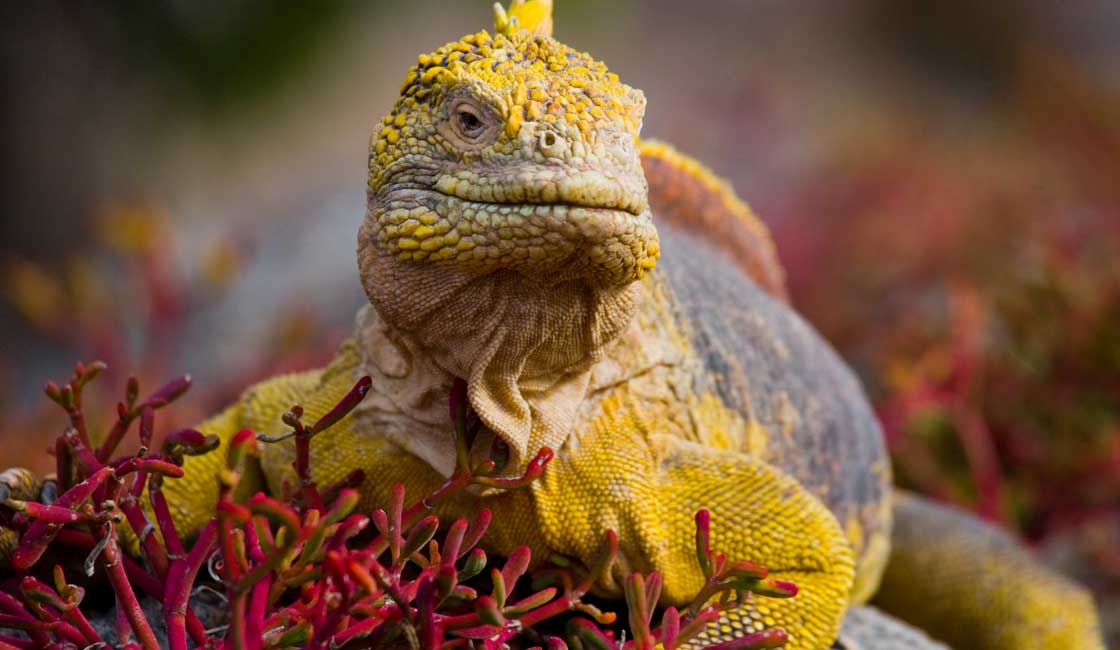
Land Iguana
9. Land Iguanas
In that location are iii species of iguana constitute on the Galapagos Islands, the yellow iguana Conolophus subcristatus, Conolophus pallidus, and the pink or rosada iguana, Conolophus marthae. The latter of the iii species was but discovered in 1986, and wasn't studied until the 2000s. Most land iguanas can exist institute in the drier areas of the islands, hiding in the shade of cacti, rocks or copse. Land iguanas can live to exist 60 years old and are herbivores.
Which island? Land iguanas can exist found on the islands of Fernandina, Isabela, Santa Cruz, N Seymour, Baltra and South Plaza.

Happy Turtle
x. Galapagos Greenish Turtles
The Galapagos Light-green Turtle is the only species of green body of water turtle that nests on the Galapagos Islands. Weighing up to 600 pounds, the Galapagos Green Turtle is one of the largest bounding main turtles in the world. Dissimilar tortoises, sea turtles cannot put their heads inside their shells, merely can stay underwater for about two-and-a-half hours without coming upward for air. You may see these huge creatures gliding through the waters around the islands or bathing in the sun on the shore. The Galapagos Green Turtle is an endangered species, and sure beaches are airtight to the public during nesting times on the islands.
Which island? Large numbers of sea turtles are found on Bartolome Island, Santiago Island, Santa Cruz Island, Santa Fe Island and Floreana Isle.
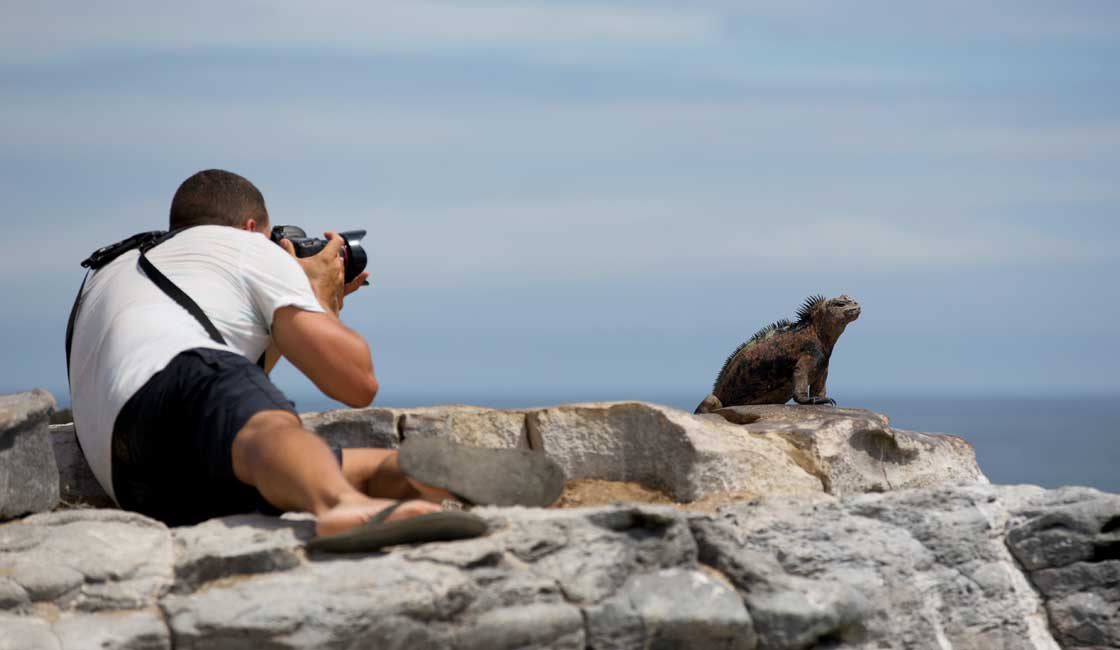
Marine Iguana Shot
Galapagos Islands Wildlife Safety Tips
The Galapagos Islands are a protected National Park and a UNESCO Earth Heritage Site, and the primary concern of the park is to protect the rare wildlife of the islands. Always listen to the advice of your naturalist guides who will be there to advise y'all of whatever danger you may pose to the wildlife, and conversely any natural dangers to you to be aware of. Beyond their good noesis, we've compiled some extra guidance below that may exist of use.
If you decide to swim with Galapagos sea lions be wary of the bulls. They are usually friendly but tin charge in the water and even bite when they feel threatened. On land, yous may detect the playful pups nudge you and touch yous, but resist the temptation to pet them. If their aroma gets tainted, equally a consequence of getting to shut to humans, their mothers will abandon them. Stings are too something you lot want to avoid. Wearing a wetsuit, even when the water is warm plenty to snorkel without one, will reduce the risk of being stung past jellyfish. Some of the beaches on certain islands likewise human activity as nurseries for some ray species which have nasty barbs which tin be very painful if you were to step on them.
With that in mind, a fundamental result is keeping a respectful and safe distance from the wildlife. Your guide will instruct you on how much distance to stand from animals (for their and your prophylactic). You may not use the wink setting when taking photographs as information technology can startle or fifty-fifty harm the wildlife. Selfie-sticks are non immune to be used for taking shut-up photos. Another less cute issue, is to scout out for iguana snot. When they go out the water they have a tendency to clear their nostrils of table salt, with a spray of saline. It isn't a harmful substance, just can ruin upward your digital camera so try to stay out of the style.
Galapagos Islands Animal Spotting Tips
To help you lot spot (and identify) the abundant Galapagos Islands' animals, we've put together some expert tips – a series of dos and don'ts – to raise your time wild fauna watching in Galapagos:
Do'southward
- Do stay within the permitted areas and just visit the islands with a licensed guide
- Do continue the recommended distance away from you lot and the species
- Do sit still and listen carefully, sound can work better than sight for spotting wildlife
- Do familiarize yourself with sounds and calls of wild fauna earlier visiting the islands
- Do observe water patterns, splashes or ripples can exist a sign of wildlife movement
- Do pay attention to landscapes, something that looks "out of place" may be an animal
- Exercise become out early in the morning, or late at night, many animals carry their "routines" during these hours
- Do bring your binoculars, camera and notebook to accept notes
Don'ts
- Do not option flowers or remove rocks
- Do non remove whatever institute or animal, expressionless or alive, or even bones, forest or shells from the islands
- Practice not have any food to the Islands
- Do not touch or handle the animals
- Do not feed the animals. It can be unsafe to you, and can destroy the animals' social structure and convenance habits.
- Practise not startle or chase any creature from its resting or nesting spot
- Do not cross the marked paths and areas designated at visiting sites
- Practise not employ the flash setting on your camera
- Do not visit unapproved areas of the Islands
- Exercise not exist loud and rowdy, this may cause wildlife to hide
- Do not get as well shut to the animals
Now that you have our tips and species listing – and know which islands you can find them on – y'all tin plan your Galapagos itinerary to increase the chances of seeing them, and check off the acme 10 Galapagos Islands animals as you spot them with ease (with a little bit of luck) – on your Galapagos vacation.
Source: https://www.rainforestcruises.com/guides/galapagos-islands-animals
Posted by: hagemanhimpre.blogspot.com

0 Response to "What Animals Live On The Galapagos Islands"
Post a Comment